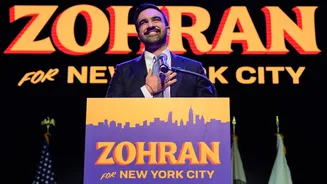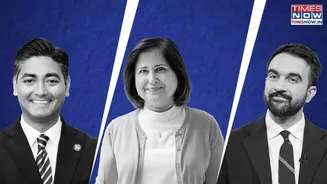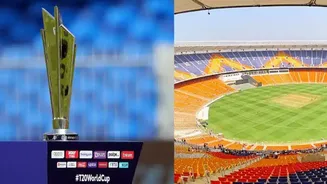NYC vs. Mumbai
The recent victory of Zohran Mamdani in New York has reignited a critical debate regarding the structure of municipal governance, particularly when comparing
the leadership styles of New York City and Mumbai. In NYC, the mayor functions as the principal leader, wielding considerable executive power and having a direct say in city operations. This contrasts sharply with Mumbai, where the BMC chief, while in a crucial leadership position, potentially experiences a more constrained capacity for independent decision-making. The comparison highlights differences in authority levels and how these distinct power structures may impact city management and overall efficacy of governance.
BMC's Role Examined
Focusing specifically on the BMC, the article explores the actual extent of the chief's authority within the system. While the BMC chief is an essential position, the degree to which they can make autonomous decisions is a key focus. Factors such as the influence of other elected officials, the bureaucracy's internal dynamics, and the involvement of various stakeholders contribute to this dynamic. Examining how these influences impact the chief's operational capabilities reveals the realities of leadership within India's largest civic body and offers valuable insights into the decision-making processes.
Political Interference
One significant element often influencing the BMC chief's functions is the political environment. Politicians, often elected at various levels, can have a strong impact on the chief's actions, sometimes providing support, but also potentially introducing challenges. This dynamic can affect the chief's ability to implement strategies, allocate resources, and make policy choices. Understanding the influence of political factors, including the various parties and their goals, is crucial to analyzing how the BMC chief truly operates and how these external pressures impact the city's overall development.
Decision-Making Complexities
The complex decision-making process within the BMC, involving numerous layers, further influences the role of the chief. This process frequently encompasses extensive consultations, approval procedures, and regulatory steps, all of which might prolong decision timelines and make the chief's direct control more challenging. Exploring this intricate network of bureaucracy, committees, and compliance procedures illustrates the challenges the chief faces when navigating and managing the city's complex operational environment. This highlights the practical constraints on the chief’s power within the organizational setup.
Leadership Implications
Considering the power dynamics, the limitations, and the political involvement, the question arises: Can the BMC chief genuinely be considered the actual head of the city? The answer is complex. Depending on many factors, the chief's effectiveness may fluctuate, either enhancing or restraining their ability to take charge. This scrutiny of Mumbai's civic leadership highlights the necessity of clarifying the roles of leaders and other influencers within a city's administrative framework and assessing if they foster efficient governance, or instead, complicate the decision-making and operational structures.















